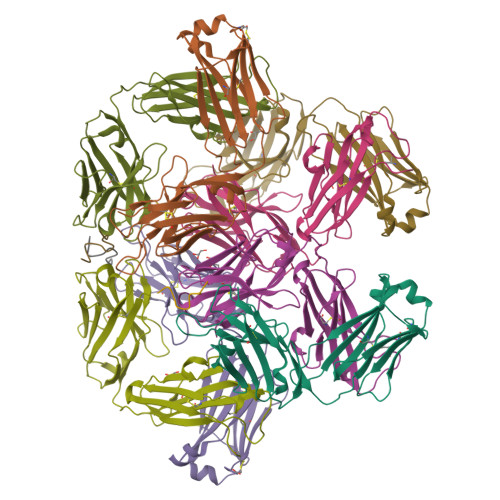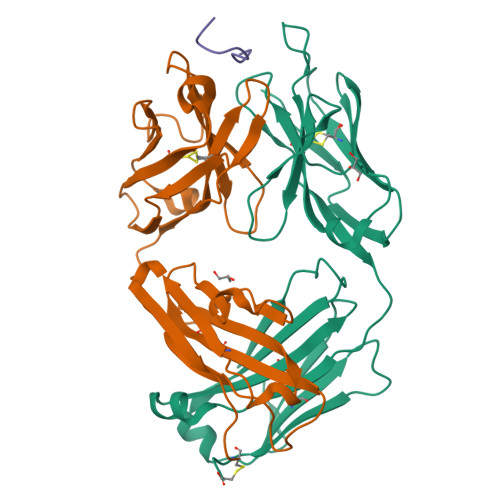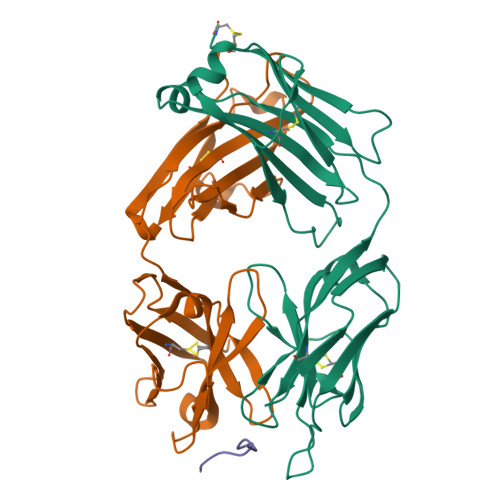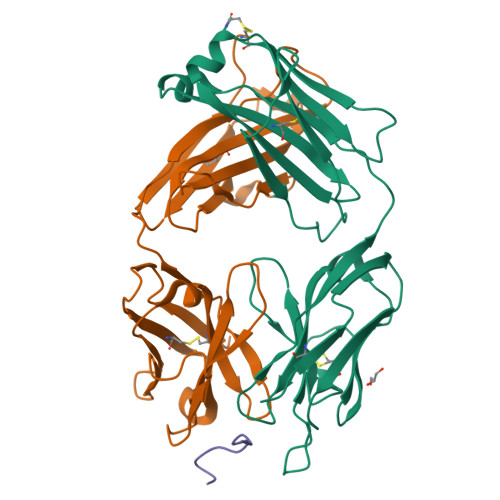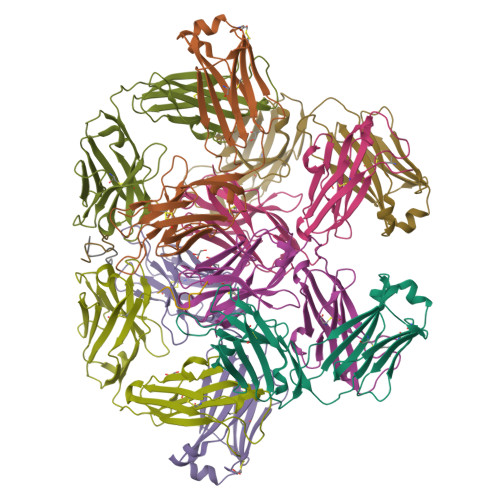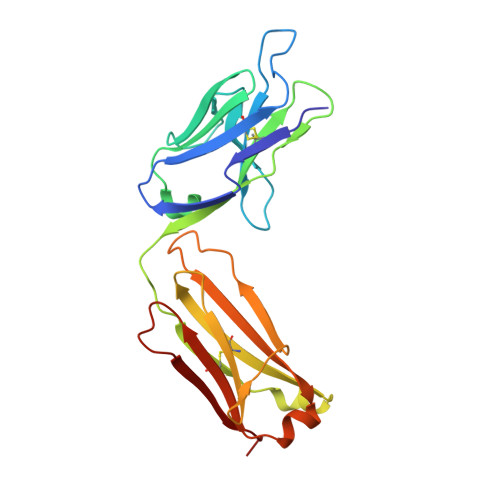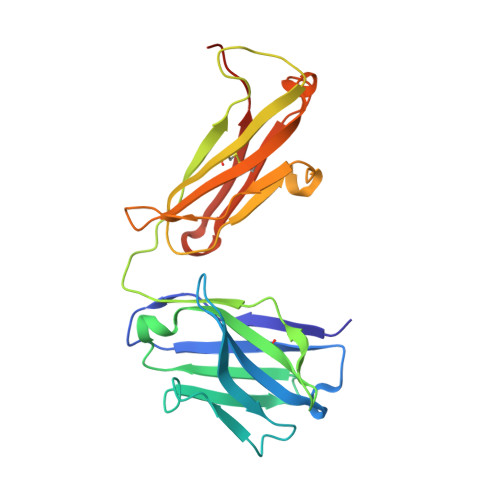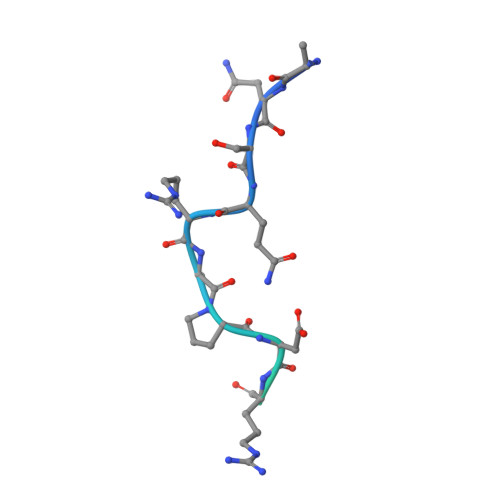Antibodies specific for a segment of human membrane IgE deplete IgE-producing B cells in humanized mice.
Brightbill, H.D., Jeet, S., Lin, Z., Yan, D., Zhou, M., Tan, M., Nguyen, A., Yeh, S., Delarosa, D., Leong, S.R., Wong, T., Chen, Y., Ultsch, M., Luis, E., Ramani, S.R., Jackman, J., Gonzalez, L., Dennis, M.S., Chuntharapai, A., DeForge, L., Meng, Y.G., Xu, M., Eigenbrot, C., Lee, W.P., Refino, C.J., Balazs, M., Wu, L.C.(2010) J Clin Invest 120: 2218-2229
- PubMed: 20458139
- DOI: https://doi.org/10.1172/JCI40141
- Primary Citation of Related Structures:
3HR5 - PubMed Abstract:
IgE-mediated hypersensitivity is central to the pathogenesis of asthma and other allergic diseases. Although neutralization of serum IgE with IgE-specific antibodies is in general an efficacious treatment for allergic asthma, one limitation of this approach is its lack of effect on IgE production. Here, we have developed a strategy to disrupt IgE production by generating monoclonal antibodies that target a segment of membrane IgE on human IgE-switched B cells that is not present in serum IgE. This segment is known as the M1' domain, and using genetically modified mice that contain the human M1' domain inserted into the mouse IgE locus, we demonstrated that M1'-specific antibodies reduced serum IgE and IgE-producing plasma cells in vivo, without affecting other immunoglobulin isotypes. M1'-specific antibodies were effective when delivered prophylactically and therapeutically in mouse models of immunization, allergic asthma, and Nippostrongylus brasiliensis infection, likely by inducing apoptosis of IgE-producing B cells. In addition, we generated a humanized M1'-specific antibody that was active on primary human cells in vivo, as determined by its reduction of serum IgE levels and IgE plasma cell numbers in a human PBMC-SCID mouse model. Thus, targeting of human IgE-producing B cells with apoptosis-inducing M1'-specific antibodies may be a novel treatment for asthma and allergy.
Organizational Affiliation:
Department of Immunology, Genentech Inc., South San Francisco, California 94080, USA.








